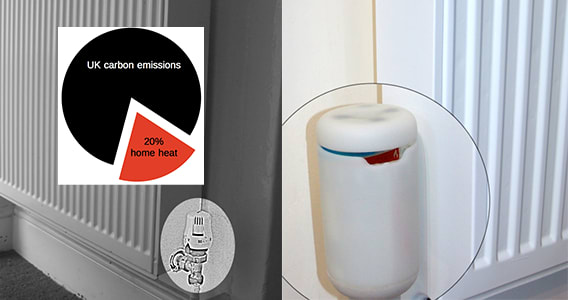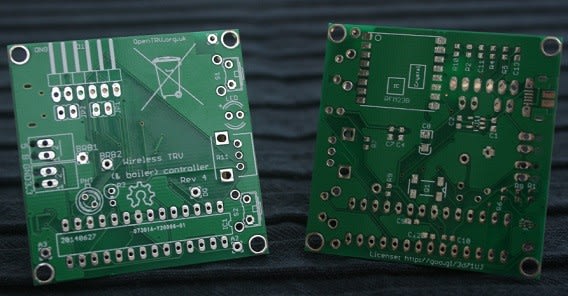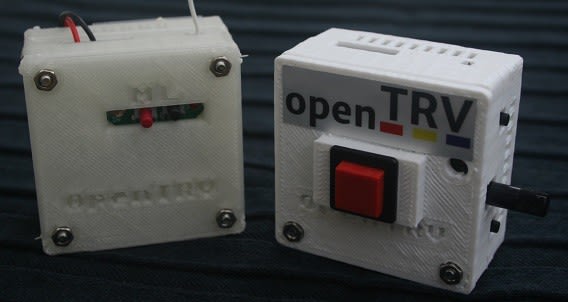OpenTRV - Saving Energy via the Internet of Things
Follow articleHow do you feel about this article? Help us to provide better content for you.
Thank you! Your feedback has been received.
There was a problem submitting your feedback, please try again later.
What do you think of this article?
The Internet of Things is growing up: not fridges ordering toothpaste, nor Orwell's 1984 (though recent scares with eavesdropping 'smart' TVs and dolls should give us pause).
The phrase was coined in 1999 Porter but only now invokes a rich ecosystem of maturing and competing hardware, software and useful applications. There will be some entertaining fights ahead as winners and losers emerge!
IoT will be truly successful when people stop noticing it, use-case by use-case, deployment by deployment, and no longer consider what it's doing to be 'IoT'. One day it will be dull and reliable, just like using a smartphone to read the BBC news.
UP IN SMOKE
The OpenTRV open source project that I lead aims to slice 10% off the UK's entire carbon footprint (8% off the EU's footprint) and save the average UK household around £300 per year. It should cost £100 or less and be installable by the end user in most cases, so no heating, Gas Safe Register, Part-P or other engineers with call-out fees. Just a new set of heads for their existing thermostatic radiator valves that don't even require any tools to replace.
Left: Radiator with conventional mechanical TRV. Right: First OpenTRV all-in-one unit, first visual prototype.
What on earth have radiator valves to do with IoT? Aren't current mechanical TRVs driven by balls of wax? And why fix something that's not broken?
Well, domestic heating is badly broken. Mechanical TRVs are a GoodThingTM, and if everyone fitted even the minimum required by building regulations now we'd save a lot of money and have more comfortable houses.
"About 20% of UK carbon emissions are from home heating; half wasted"
However, we are still wasting a lot of energy and money, about half of our heating spend, and also belching out a lot of carbon unnecessarily.
In the UK alone we spend £10bn on just gas for domestic space heating (not including hot water nor cooking) and probably half of that is unnecessary; 5 billion quid a year up in smoke each year. Don't get me started on electric heating!
OpenTRV's IoT technology can fix this, and potentially make your house work better too.
There are two things that commercial buildings tend to do better than our homes in terms of heating: firstly not trying to set the whole building's temperature and control the boiler from one thermostat somewhere cold such as a corridor, and secondly not routinely heating (or cooling) rooms that aren't in use.
More than half of us don't turn the temperature down when we leave a room or even our home, according to DECC (the UK's Department of Energy and Climate Change) surveys such as DECC2012. Fixing those requires a little bit of technical effort and expense. IoT's comms-n-smarts recipe, as implemented by OpenTRV, makes this easy and cheap to retrofit.
ATMEGA AT HEART
Our radiator valve thinks it's an Arduino, with an ATMega328P microcontroller, running on microwatts so that a couple of AA batteries will keep it fed for a year or two. It has some simple manual controls (if you need an instruction manual, we've failed) and a number of sensors including temperature and light, but also optionally humidity, voice and others.
OpenTRV PCBs, Solderpad licensed
With these it can detect occupancy and control the room temperature. The unit can even accept a couple of simple warm-up programmes (though no clocks need setting and there are no fiddly displays to read); I set my kids' rooms to be warmed for an hour or so around bed time in winter with two button presses. The other 22+ hours then don't need heat at all.
In its most aggressive energy-saving mode the unit will automatically turn the temperature target down by as much as 3°C if it knows you're not around and not likely to be for a while (it learns your habits). This is as much as a 30% energy saving even if you just turn your central heating on in October and off in April and never deign to think about it in between, which is what most of us do (well, not me, I'm one of life's tweakers).
Each unit also has a radio, and if you replace your house thermostat with our boiler controller then it won't leave your boiler running all the time that it might be needed as is the usual UK home heating behaviour; the boiler will only be switched on if at least one of the rooms actually needs heat. That is getting to the 50% savings level for an average UK home. (And may save much of 1GW of electricity demand in the winter from 20+ million circulation pumps at 50W or so each.)
Note: no smartphone or Internet is required, though that's coming for those who want it.
So back to the "what has this to do with IoT?" question...
Sensors, actuators, radio, some local processing, a completely open software and hardware and mechanical design published in public repos, and programmable with an existing free widely-used IDE... That's practical IoT. But when all it's doing is turning your radiators and boiler on and off and saving you a chunk of cash it's dull isn't it?
It's also getting real, however; and that's the way IoT should be going.
REV1 and REV2 controller units, in 3D-printed boxes (Apache licensed OpenSCAD)
ON THE BUSES
There's a huge game of chicken going on in IoT at the moment, with everyone wanting their own technology stack to prevail with the benefits that may bring the current owners, including vendor lock-in.
Also, many deployments of IoT have to be cheap-as-chips to enable rapid iterative development and low per-measurement and per-data-point costs. There are no gold-plated solutions for most of the interesting problems on the horizon, I believe.
Did you know that there are close to 400,000 bus stops in the UK, and while some transport operators have a reasonable idea where their buses are they have relatively little clue where their potential passengers. Nor how many of them are jammed under each shelter or not, nor maybe about to be late for school because there won't be room for them on the vehicles already dispatched...
At that sort of scale, and being paid for on your bus ticket, the hardware has to be cheap, the comms must just work (and be cheap), and the installation has to be simple and cheap and not require mains power, cheap to maintain, cheap to develop and cheap and easy to integrate with existing IT... I see a pattern.
Part of our "IoT Launchpad" TC2014 project running for a year from April 2015 is to help try to find if IoT is ready to solve this footfall problem at a reasonable cost and accpetable accuracy to give passengers (the end users) a better experience and allow the operators better fleet management.
For this the guts of our tenner radiator valve could be just the job, though we will be trying hard not to reinvent wheels already good enough, nor make more feathers fly in that global game of chicken.
Part of our project plan is to engage skilled participants such as you, gentle engineer, in the entire process for this short project.
We also aim to get all the results into your hands as quickly as possible to help avoid people being forced to endlessly work this out again and again instead of doing the interesting and useful stuff!
Please do join in at OPENTRV!
We will commercialise our IoT platform (alongside our smart TRV) and one day very soon I hope that RS will be stocking both!
REFERENCES
- [OPENTRV] http://opentrv.org.uk/IoT/
- [DECC2012] https://www.gov.uk/government/uploads/system/uploads/attachment_data/file/65598/6918-energy-efficiency-strategy-statistical-summary.pdf
- [TC2014] https://techcityuk.wordpress.com/2014/12/18/iot-launchpad-winners/
- [Porter] http://www.elinux.org/images/0/0a/Building_IoT_systems_with_openHAB.pdf
- [SAMSUNG] http://www.samsung.com/uk/news/local/the-internet-of-things-needs-openness-and-industry-collaboration-to-succeed-says-samsung-electronics-ceo-bk-yoon
Damon Hart-Davis / OpenTRV





Comments